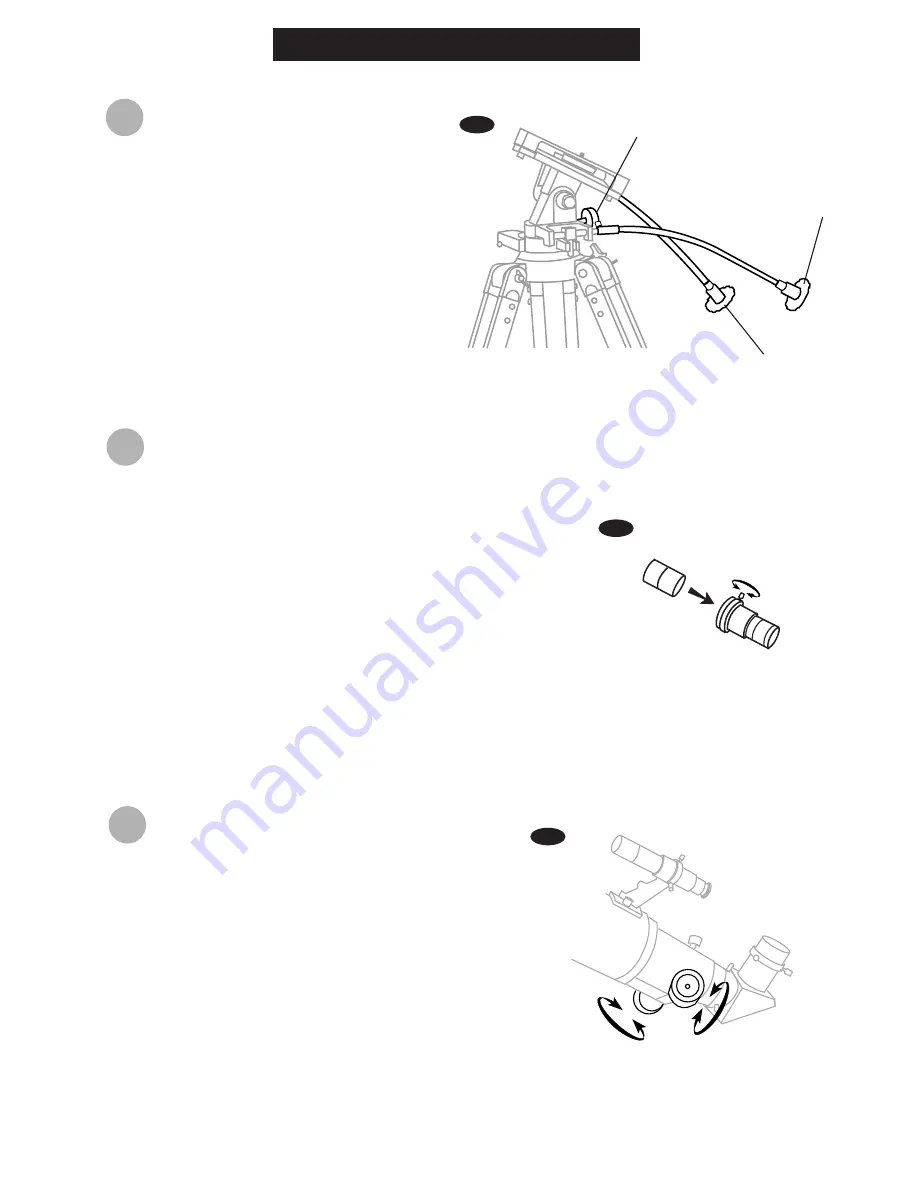
5
OPERATING YOUR TELESCOPE
Fig.b
Barlow
Eyepiece
U
sing the Barlow lens
A Barlow is a negative lens which increases the magnifying power
of an eyepiece, while reducing the field of view. It expands the cone
of the focussed light before it reaches the focal point, so that the
telescope's focal length appears longer to the eyepiece.
The Barlow is usually inserted between the diagonal and the eyepiece
(Fig.b). With some telescopes, it can also be inserted between the
focuser and the diagonal, and in this position it gives even greater
magnification. For example, a Barlow which is 2X when inserted after
the diagonal can become 3X when placed in front of the diagonal.
In addition to increasing magnification, the benefits of using a Barlow lens include improved eye relief,
and reduced spherical aberration in the eyepiece. For this reason, a Barlow plus a lens often outperform
a single lens producing the same magnification. However, its greatest value may be that a Barlow can
potentially double the number of eyepiece in your collection.
F
ocusing
Fig.c
Slowly turn the focus knobs under the focuser, one way
or the other, until the image in the eyepiece is sharp
(Fig.c). The image usually has to be finely refocused over
time, due to small variations caused by temperature changes,
flexures, etc. This often happens with short focal ratio
telescopes, particularly when they haven't yet reached
outside temperature. Refocusing is almost always
necessary when you change an eyepiece or add or
remove a Barlow lens.
O
perating the AZ3 mount
This mount has controls for movement in altitude
(up-down) and azimuth (left-right). Coarse azimuth
movement is controlled by a locking knob located
near the tripod head for left-right rotation. Loosen
the knob to make large direction changes then lock
it for fine adjustments. Coarse Altitude movement
is controlled by a friction bolt. Use the micro-
adjustment control cables to make small altitude
and azimuth movements such as centreing
objects in view. The microadjustment controls
have limited travel so it is best to contre them
on their threads before making a coarse
adjustment. (Fig. a)
Azimuth fine adjustment
Altitude fine adjustment
Azimuth locking knob
Fig.a









